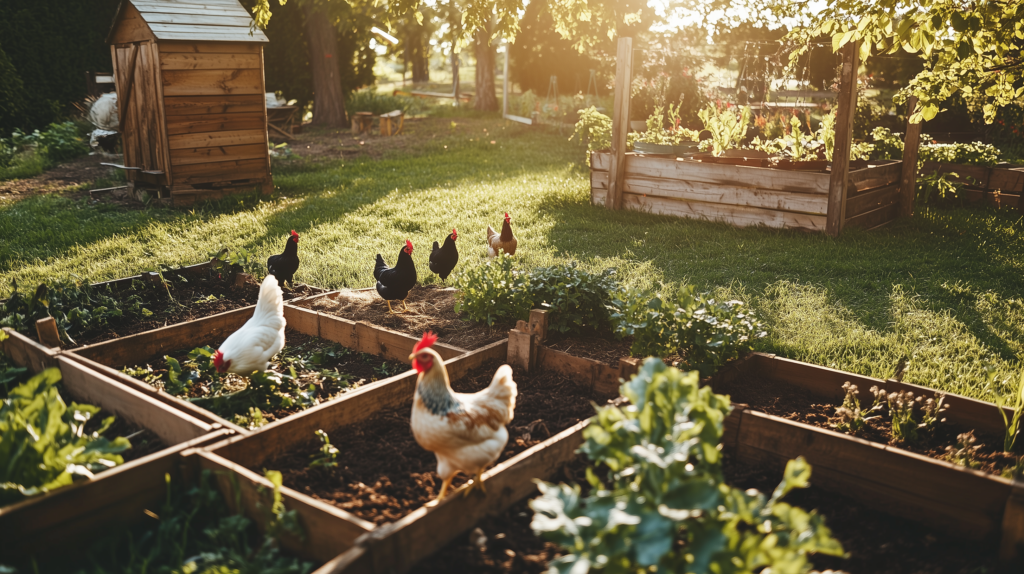This post may contain affiliate links, including those from Amazon Associates. If you make a purchase through these links, I may earn a commission at no additional cost to you. Learn more about our affiliate policy.
For as long as I can remember, I have dreamed of owning a little piece of land. I would have sprawling gardens, a cozy chicken coop, and a pantry stocked with canned goods from my harvest. But for now, that dream is on hold as I live in an apartment in the middle of the city.
At first, I thought I could not start homesteading until I had that idyllic rural setup. But over time, I realized that self-sufficiency is not about where you live. It is about what you do with the space and resources you have.
At first, I worried that my dreams of self-sufficiency were impossible without land. Thankfully, I’ve discovered that’s simply not true.
Self-sufficiency is less about acres of farmland and more about mindset, creativity, and a willingness to learn new skills. Even the smallest apartment has huge potential for homesteading magic.
Here’s how you can start apartment homesteading, no matter how small your space might be.
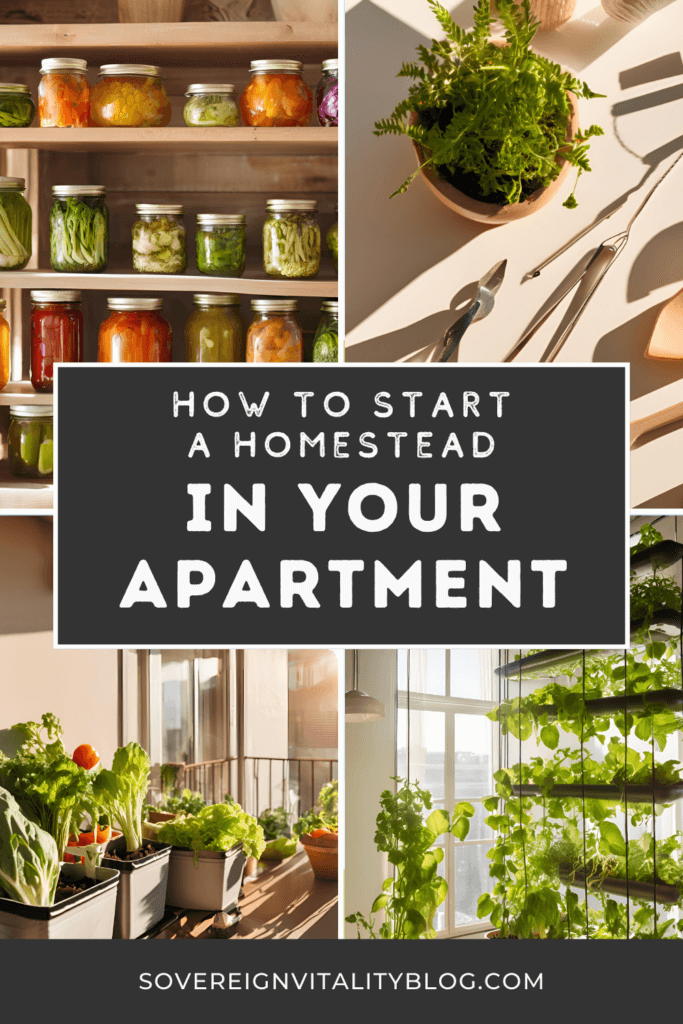
What Is Apartment Homesteading?
Apartment homesteading is a modern approach to self-sufficient living that adapts traditional homesteading practices to urban settings. It is about embracing sustainability, resourcefulness, and independence within the constraints of a small space.
Whether you are growing your own food, learning practical skills like sewing or preserving produce, or finding ways to reduce waste, apartment homesteading proves that you do not need acres of land to live a more self-reliant.
It is about making the most of what you have, wherever you are.
Start an Apartment Garden
Container Gardening for Renters
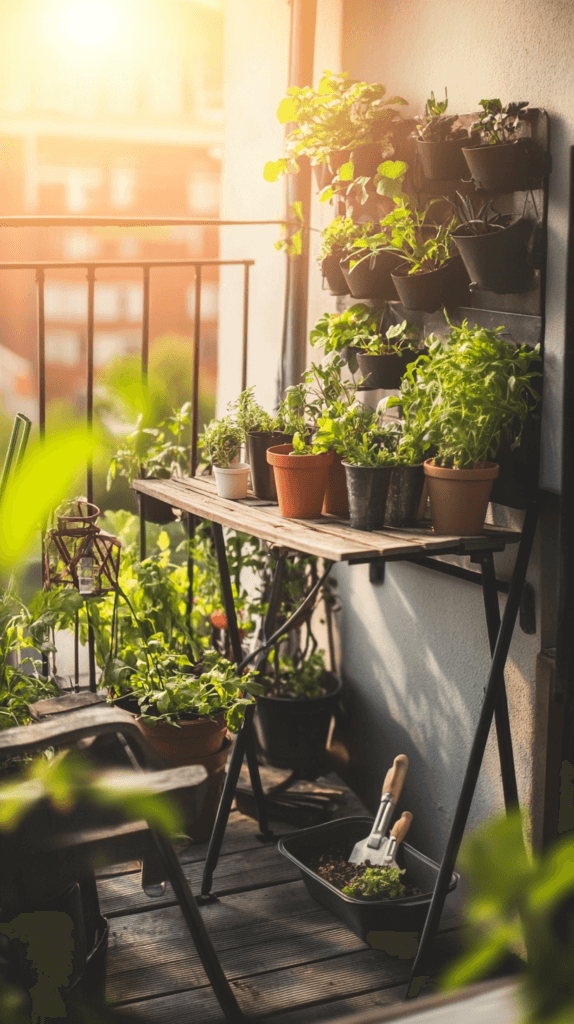
Growing your own food is the cornerstone of self-sufficiency. Even in my tiny apartment, container gardening transformed my windowsills into vibrant green spaces.
- Start simple: Herbs like basil, parsley, and mint grow wonderfully indoors and add fresh flavor to your meals. Leafy greens and cherry tomatoes also flourish in containers. Choose the easiest vegetables to grow in containers to maximize your chances of success.
- Keep it practical: Choose pots that fit your aesthetic and windowsills. Good drainage and quality potting soil make a huge difference.
I share more detailed tips in my guide to How To Start a Renter Friendly Contatiner Garden.
Creating a Balcony Garden Oasis
If you’re lucky enough to have a balcony, it’s a precious homesteading resource.
- Go vertical: Maximize your limited space with hanging planters, wall-mounted gardens, and vertical stands. It’s amazing how many vegetables and herbs you can grow this way.
- Choose wisely: Compact vegetables, strawberries, and wildflowers thrive on balconies, adding beauty and bounty to your urban space.
Check out my these tips on Balcony Gardening Secrets for Apartment Homesteaders.
Indoor Vertical Herb Wall Garden
An herb wall garden is practical, beautiful, and easy to DIY.
- Build your garden: Wall-mounted planters or shelves near a sunny window are perfect for indoor herbs.
- Enjoy freshness year-round: Imagine snipping fresh rosemary, thyme, or basil right in your kitchen.
Dive deeper into setting up your own with my post on 7 Creative Indoor Vertical Herb Wall Gardens.
Cooking Your Own Food
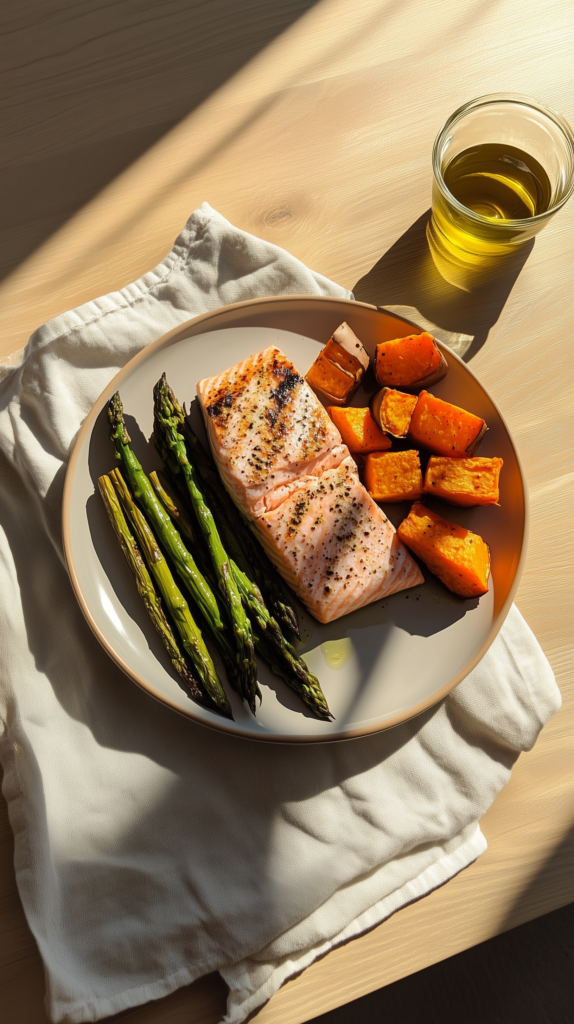
Cooking your own meals is a powerful way to take control of your sovereign health and well-being. It allows you to avoid hidden additives, seed oils, and overly processed ingredients, ensuring that what you put into your body nourishes and energizes you.
Not only is home cooking healthier, but it’s also a cost-effective and creative outlet that can bring joy to your daily routine.
Preparing meals at home doesn’t have to be complicated. Start with simple, clean recipes that feature whole foods like grass fed beef or wild caught salmon and roasted vegetables.
If you’re a clean eating beginner, it may feel a little overwhelming at first. The trick is to pick one meal you can get really good at and practice it. Then pick another. You’ll be surprised at how quickly you develop confidence in the kitchen when you focus on easy, wholesome recipes.
Additionally, cooking at home fosters a deeper connection to your food, and is one of the cornerstones of building a more self-sufficient kitchen. This lessens your reliance on grocery stores and large-scale food systems.
You’ll gain an appreciation for where your ingredients come from and the effort it takes to create nourishing meals. Choose organic produce at the grocery store, get a local produce subscription box or visit a farmer’s market to find the best options.
Preserve Your Own Food (Without Canning)
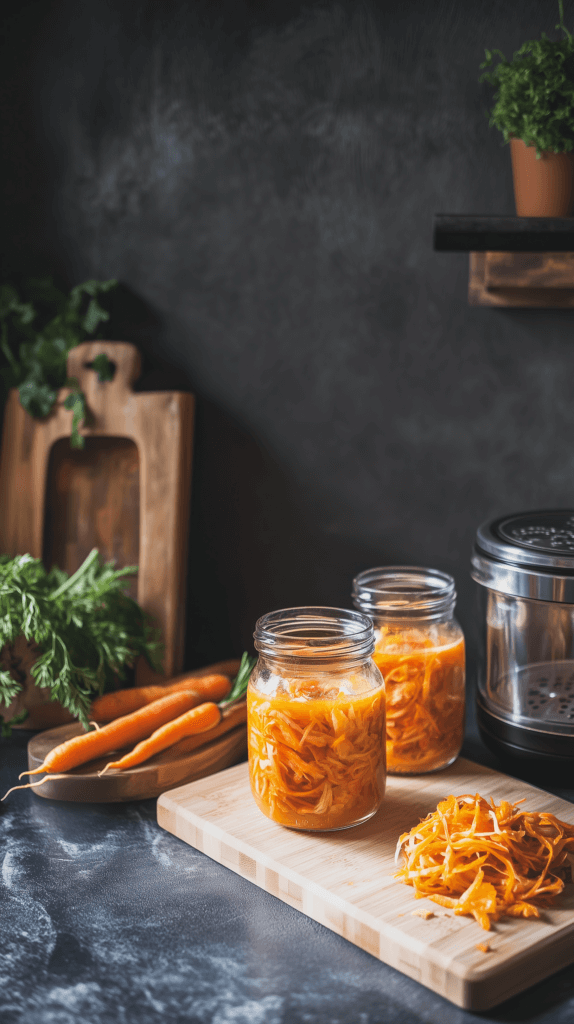
Food preservation is a rewarding skill, but it can feel overwhelming at first, especially when specialized equipment is involved. While methods like canning and dehydrating are wonderful ways to make the most of fresh vegetables, they do require a bit of time and preparation.
That’s why I’ve come to love quick pickling as an easy, low-commitment option that’s perfect for apartment homesteaders.
Quick Pickling: The Easy Way to Preserve Produce
Quick pickling vegetables is a fantastic method to preserve without the need for bulky tools or hours of effort. It’s as simple as combining fresh produce with a vinegar-based brine and letting it sit. In just a day or two, you’ll have crisp, tangy pickled vegetables that are perfect for adding flavor to salads, sandwiches, or charcuterie boards. It’s an excellent way to reduce food waste and extend the life of your fresh produce with minimal effort.
Freezing and Dehydrating
Freezing herbs in olive oil cubes or dehydrating fruits for homemade snacks extend your fresh food with minimal effort. You can also dry herbs easily with these 5 methods.
Learn more about easy preservation methods in in the post How to Preserve Food Without Canning.
Switching to Non-Toxic Products in Your Home

Transitioning to non-toxic products in your home is one of the simplest yet most impactful ways to create a healthier living environment.
Many conventional household products like cleaners, air fresheners, and even personal care items contain harmful chemicals that can affect your health over time. Making the switch to natural alternatives or even making your own cleaning products not only reduces your exposure to toxins but also fosters a sense of peace, knowing your home is a safe and nourishing space for you and your loved ones.
Start with small, manageable swaps. Replace chemical-laden cleaners with natural options like white vinegar, baking soda, and castile soap.
Opt for reusable beeswax wraps instead of plastic wrap, and look for natural alternatives to synthetic air fresheners, such as essential oil diffusers. Even switching your laundry detergent to a non-toxic brand can make a noticeable difference in reducing irritants in your home.
As you make these changes, you’ll likely notice more than just the physical benefits. Creating a non-toxic home encourages mindfulness and intentionality in your daily habits, aligning beautifully with the principles of sustainable, healthy living.
Bee’s Wrap reusable beeswax food wraps are eco-friendly alternatives to plastic wrap, made in the USA with organic cotton and beeswax. Durable, washable, and compostable, they’re perfect for sustainable, toxin-free food storage.

The JoyJolt JoyFul 24pc Glass Food Storage Set features airtight, freezer- and oven-safe containers in versatile shapes and sizes. Perfect for meal prep and pantry organization, these durable, leak-proof containers simplify clean, intentional living.

Developing Practical Skills
When I started my apartment homesteading journey, I quickly realized how empowering it felt to learn new skills that made me more self-reliant.
Learning Basic Sewing and Repair Skills
Simple things like sewing on a button or patching up torn clothing became satisfying ways to extend the life of items I already owned. These small actions felt like victories, and they added up over time.
Repairing items instead of replacing them is another skill that has become invaluable. From fixing a wobbly chair to reattaching a loose handle on a cabinet, I have found that even basic knowledge of tools and techniques goes a long way. It not only saves money but also keeps perfectly good items out of the landfill.
Creative Upcycling Projects for Your Home

Upcycling also became a favorite pastime of mine. By reimagining the use of old or broken items, I have been able to create beautiful and functional decor for my home.
Learning these practical skills has taught me to appreciate the process of creating and fixing. Each new project strengthens my confidence in my ability to tackle challenges and reduces my reliance on store-bought solutions.
Building Community Connections
Homesteading, even in an apartment, does not have to be a solitary endeavor. One of the most fulfilling parts of this journey has been connecting with others who share similar values. Joining a local community garden was one of the best decisions I made. It not only gave me access to additional gardening space but also introduced me to a supportive network of people with knowledge and experience to share.
The American Community Garden Association website has an interactive map and search function to help you find a community garden near you.

Farmers markets and CSA (Community Supported Agriculture) programs are also fantastic ways to build connections. These not only provide fresh, locally grown produce but also create opportunities to meet the people who grow your food. Having these conversations deepens the connection to what you are eating and the land it came from.
Building these connections has reminded me that homesteading is about more than self-reliance. It is about being part of a larger movement that values sustainability, community, and care for the earth.
Starting Small and Scaling Up
When I began my apartment homesteading journey, I quickly realized that the key to success was starting small. It can be tempting to dive into every project at once, but focusing on one area at a time helped me avoid feeling overwhelmed. I began with something simple, like growing a few herbs on my windowsill, and built from there.
As I gained confidence, I expanded my efforts. After mastering basic gardening, I started experimenting with DIY projects, learning how to make cleaning products and upcycle items around my apartment. Each new skill felt like a small victory, and those small wins kept me motivated to take on bigger challenges.
Scaling up does not mean you have to do everything all at once. It is about gradually adding new practices and finding what works best for your lifestyle. For example, once I felt comfortable with gardening and DIY, I started focusing on food preservation and batch cooking. These practices fit naturally into my routine and added even more value to my homesteading journey.
The beauty of apartment homesteading is that it is flexible. You can adapt your efforts to your space, schedule, and interests. The most important thing is to take that first step, no matter how small, and let your passion grow from there. Homesteading is a journey, not a destination, and every little step you take brings you closer to a more self-sufficient and sustainable life.




